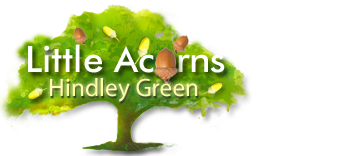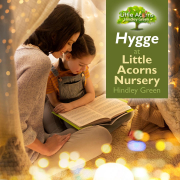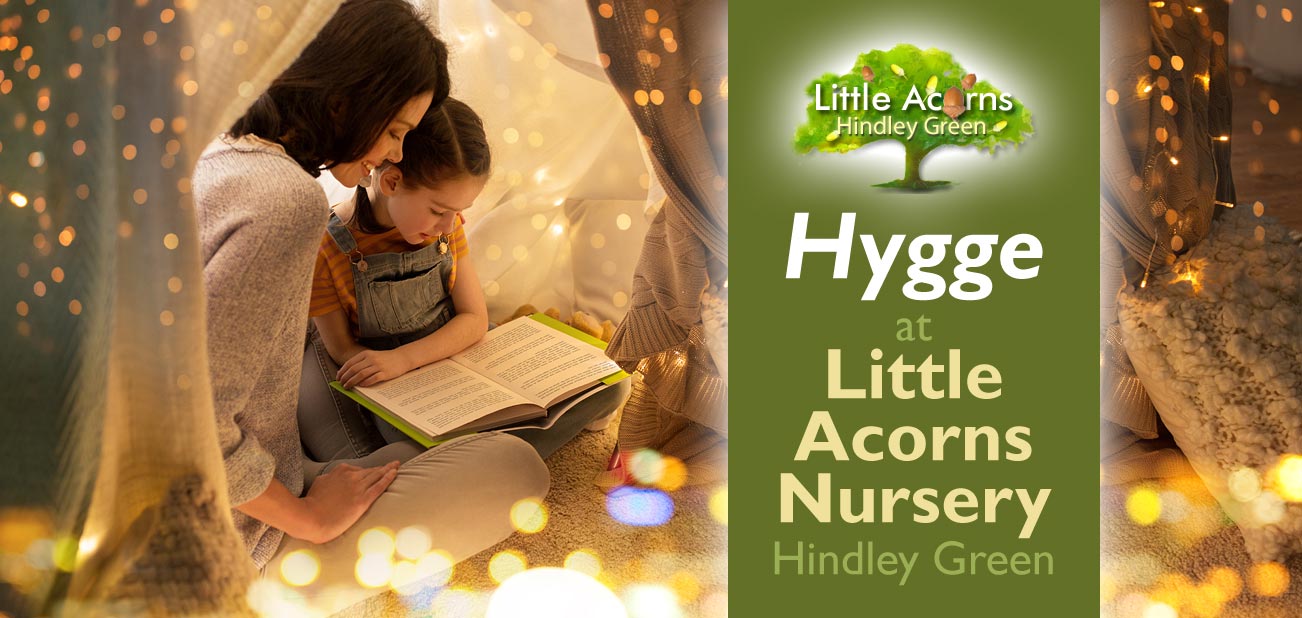
 At Little Acorns Nursery in Hindley Green, we’re embracing Hygge (pronounced “Hue-gah”), which is becoming very popular around the globe. But what is Hygge and why are we embracing it? This article explains everything and you’ll soon see why Hygge is a very good thing for everyone at the nursery, including both children and staff. Take a look …
At Little Acorns Nursery in Hindley Green, we’re embracing Hygge (pronounced “Hue-gah”), which is becoming very popular around the globe. But what is Hygge and why are we embracing it? This article explains everything and you’ll soon see why Hygge is a very good thing for everyone at the nursery, including both children and staff. Take a look …
What is Hygge?
The word Hygge is a Danish word, although is also used in the Norwegian language to refer to the same thing. It describes a feeling, mood and lifestyle of cosiness, wellbeing and contentment. It’s also about a lifestyle that’s more simple, where you live more in the moment and are closer to nature.  Hygge has been described as resulting in “comfortable conviviality” i.e. friendliness and warmth that makes everyone feel welcome and happy. It’s also been described as “the pursuit of everyday happiness … basically like a hug, just without the physical touch.”
Hygge has been described as resulting in “comfortable conviviality” i.e. friendliness and warmth that makes everyone feel welcome and happy. It’s also been described as “the pursuit of everyday happiness … basically like a hug, just without the physical touch.”
What Does a Hygge Lifestyle Look Like?
To understand Hygge more, it may help to know what it looks like. So, with a Hygge lifestyle, you would expect to see a particularly warm and cosy kind of environment. Rooms that embrace Hygge have a lovely homely feel about them with blankets, cushions, rugs and soft furnishings that make the atmosphere warm and reduce noise and echoes. 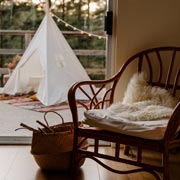 There will be twinkly ‘mood’ lighting instead of harsh fluorescent lighting. Rooms will have real plants that bring nature indoors, natural materials and objects like wood, wicker, pine cones and pebbles. There will be calming music and perhaps even scent in the air. There will be cosy corners, dens and even teepees where children can ‘nest’ while they read, play or converse. Hygge gives a room a lovely atmosphere, often with flickering candles (or, at the nursery, the warm-coloured LED equivalents, for safety purposes).
There will be twinkly ‘mood’ lighting instead of harsh fluorescent lighting. Rooms will have real plants that bring nature indoors, natural materials and objects like wood, wicker, pine cones and pebbles. There will be calming music and perhaps even scent in the air. There will be cosy corners, dens and even teepees where children can ‘nest’ while they read, play or converse. Hygge gives a room a lovely atmosphere, often with flickering candles (or, at the nursery, the warm-coloured LED equivalents, for safety purposes).
What Does Hygge Feel Like?
The Hygge lifestyle is a very pleasant, comfy and pleasurable one. It’s as much about warmth, cosiness and friendliness as it is about harmony, togetherness, sharing, equality and mutual respect. As such, it minimises conflict and leads to calmness and harmonious play. It’s also about living in the moment (‘presence’) with aspects of mindfulness. Hygge also encourages individuals to reflect on things they can be grateful for. All in all it’s a very pleasurable atmosphere and approach to daily life.
Why Embrace Hygge at Our Early Years Childcare Setting?
 Embracing all these aspects of Hygge will make children feel really at home, safe, relaxed, cosy and content. Their day will feel fulfilling and enriched. It will be calm and peaceful whilst also embracing nature both outside and indoors. Friendships will deepen as small groups of children play, converse, read or simply ‘be’ in the many cosy nooks and dens available to them. They are also free to have some solo time where they can explore a particular interest, relax with a book or engage in an activity in a calm and comfortable corner. Whatever they’re doing, children will enjoy and benefit from the mood lighting, calming surroundings, relaxing music and suchlike.
Embracing all these aspects of Hygge will make children feel really at home, safe, relaxed, cosy and content. Their day will feel fulfilling and enriched. It will be calm and peaceful whilst also embracing nature both outside and indoors. Friendships will deepen as small groups of children play, converse, read or simply ‘be’ in the many cosy nooks and dens available to them. They are also free to have some solo time where they can explore a particular interest, relax with a book or engage in an activity in a calm and comfortable corner. Whatever they’re doing, children will enjoy and benefit from the mood lighting, calming surroundings, relaxing music and suchlike.
Hygge instinctively appeals to a child’s very heart and soul.
All in all, Hygge is a far cry from the traditional bright and often sterile surroundings that so many youngsters have to tolerate in early years settings. In contrast to those,  Hygge is like a warm cloak that softly embraces every child, allowing him or her to quietly blossom, learn and develop in the most homely and relaxed of atmospheres. With Hygge, they can embrace and naturally absorb everything that’s so good about the Hygge lifestyle, including it’s almost magical effects that will bring out the wonder in every child. Hygge instinctively appeals to a child’s very heart and soul, allowing their learning and development to blossom and thrive in the most natural of ways.
Hygge is like a warm cloak that softly embraces every child, allowing him or her to quietly blossom, learn and develop in the most homely and relaxed of atmospheres. With Hygge, they can embrace and naturally absorb everything that’s so good about the Hygge lifestyle, including it’s almost magical effects that will bring out the wonder in every child. Hygge instinctively appeals to a child’s very heart and soul, allowing their learning and development to blossom and thrive in the most natural of ways.
Hygge Accreditation at Little Acorns Nursery
Little Acorns is thoroughly embracing the Hygge lifestyle and approach to early years learning and development. As part of this, we will work towards official Hygge in Early Years accreditation over the course of 2022. We believe it will empower and enrich the lives of every child in deep-seated, profound ways.
Little Acorns Nursery & Pre-School in Hindley Green, near Wigan, Bolton & Manchester
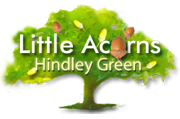 Little Acorns nursery & pre-school in Hindley Green
Little Acorns nursery & pre-school in Hindley Green 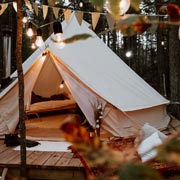 gives babies, toddlers and preschoolers the very best start in life and in their early years education. If you are looking for the best childcare service in Hindley Green, Wigan or near Bickershaw, Leigh, Atherton, Westhoughton, Ince-in-Makerfield, Platt Bridge, Tyldesley, Bolton or Greater Manchester, please get in touch. We can arrange a guided visit for you and your little one, without obligation. Alternatively, simply fill in and submit an application for a nursery/pre-school place for your child — click the relevant button below to get started. We’re also happy to answer any questions that you may have and to clarify any free childcare options that may be available to eligible families via Government-funded childcare schemes.
gives babies, toddlers and preschoolers the very best start in life and in their early years education. If you are looking for the best childcare service in Hindley Green, Wigan or near Bickershaw, Leigh, Atherton, Westhoughton, Ince-in-Makerfield, Platt Bridge, Tyldesley, Bolton or Greater Manchester, please get in touch. We can arrange a guided visit for you and your little one, without obligation. Alternatively, simply fill in and submit an application for a nursery/pre-school place for your child — click the relevant button below to get started. We’re also happy to answer any questions that you may have and to clarify any free childcare options that may be available to eligible families via Government-funded childcare schemes.
